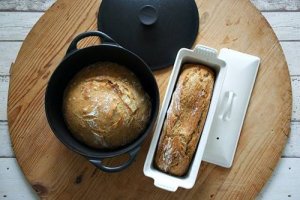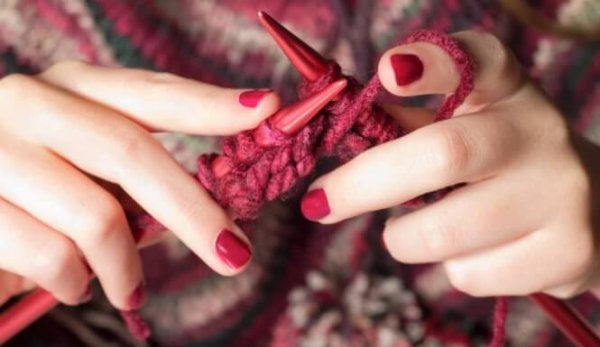"Do It At Home": The New Trend in Times of Pandemic


Written and verified by the psychologist Valeria Sabater
Confinement hasn’t only changed our life habits. Somehow, it has also forced us to develop our ingenuity and discover dormant skills. The “do it at home” trend also characterizes this pandemic era, in which cooking, manufacturing, building, and even being our own hairdressers has become commonplace.
Does this mean that we’ll stop going to the bakery every day and do without our hairdressers forever when things go back to normal? The answer, of course, is no.
When we return to the normal rhythm of life with all our obligations, we’ll face many changes, there’s no doubt about that. However, we won’t stop availing ourselves of the basic services offered by professionals in each sector.
However, in times of difficulty, great remedies always emerge when faced with unexpected shortages. We’ve seen it, for example, in that wonderful neighborhood movement where men and women have come together in solidarity to make masks. Now, some people make them at home in order to have customized ones and adapt to the tastes and styles of their children.
Many have learned to sew, cook, and even cultivate a small garden. In addition, most of the time we don’t do it out of necessity or because there’s a lack of certain products. It’s usually just a way of filling our time, freeing our imagination, and making our days more bearable in these days of confinement which has raised physical and mental walls around us.

Do it at home: a pleasure more than a need
During these last few weeks, the social networks have been full of photos of people uploading the results of their time spent in the kitchen. We’ve seen all kinds of bread. They’ve surprised us with incredible recipes of the most tempting desserts – some more successful than others.
Recently, the trend was gnocchi. And if there are still some more days of confinement ahead of us, then surely some other type of food or dessert will start to trend.
In this type of movement where people “do it at home”, there’s a contagious effect. What we see on Instagram ends up awakening our curiosity and desire to imitate activities. This has meant, for example, that, for a few weeks, the most commonly-purchased products in supermarkets were yeast and flour.
However, despite the fact that this behavior is still curious from a psychological point of view, we should qualify one aspect of all of this.
It’s true that it isn’t wise to go shopping every day and sometimes we miss that freshly baked bread or pastry. However, if many people have turned to the kitchen it’s not out of necessity, it’s out of pleasure and to fill the time.
Working with your hands is therapeutic in reducing depression
Everyone is facing this time of confinement in their own way. It’s just as valid to choose a more restful life and do as little as possible, as it is to do non-stop activities, one after the other.
Be that as it may, the do-it-at-home movement has an advantage that’s important to emphasize. Working with your hands and doing manual and creative tasks benefits your brain health and reduces depression.
A very interesting book talks about this. Dr. Kelly Lambert, a neuroscientist at the University of Richmond in the United States, is the author of Lifting Depression: A Neuroscientist’s Hands-On Approach to Activating Your Brain’s Healing Power.
Cooking, sewing, hand-knitting, modeling, painting, drawing, and farming, among other activities, focus our attention on the here and now. They regulate your emotions, reduce stress, and even increase the plasticity of your brain. We could certainly say that these tasks are ideal in these current times.

Do it at home, discover that you can also be self-sufficient
Some people have started their cultivation project on their balcony or in a small garden. Planting seeds, watching them grow, and discovering how a vegetable germinates allows people to discover that they can eat what they grow.
Making bread, cutting your own hair, sewing, or even starting an online course helps people see that they can, in a small way, achieve a lot without leaving home.
It’s true that we can be (humbly) self-sufficient in certain products and services in a very limited way, but it is a start. Perhaps this time of confinement will bring out two things in all of us.
The first is to value all those people who guarantee our subsistence every day (supermarket staff and farmers, among others) a lot more than we used to.
The second is to discover, thanks to this “do it at home” trend, that each one of us is capable of many more things. And, on top of that, we actually enjoy doing them.
The work that we do by hand is very rewarding and means that we’ll appreciate it that much more. So much so, that maybe we’ll use it in the future to make a small organic garden or to eat more healthily by using homemade recipes and avoiding the frozen or ready-meal sections of supermarkets. All of this gives us something to think about!
All cited sources were thoroughly reviewed by our team to ensure their quality, reliability, currency, and validity. The bibliography of this article was considered reliable and of academic or scientific accuracy.
- Heuninckx, S., Wenderoth, L., & Swinnen, S. (2008). Systems Neuroplasticity in the Aging Brain: Recruiting Additional Neural Resources for Successful Motor Performance in Elderly Persons. Journal of Neuroscience, 28 (1) 91-99; DOI: https://doi.org/10.1523/JNEUROSCI.3300-07.2008
- Kays, Jill L., et al. (2012). The Dynamic Brain: Neuroplasticity and Mental Health. The Journal of Nuropsychiatry and Clinical Neurosciences. https://doi.org/10.1176/appi.neuropsych.12050109
- Lambert, Kelly (2010) Lifting Depression: A Neuroscientist’s Hands-On Approach to Activating Your Brain’s Healing Power. Basic Books.
This text is provided for informational purposes only and does not replace consultation with a professional. If in doubt, consult your specialist.








